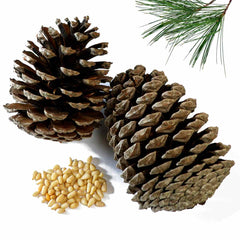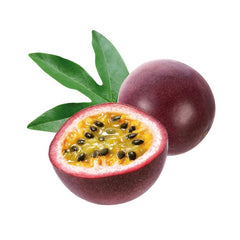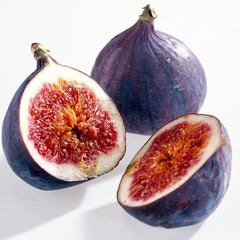What is the Difference Between Gourmand and Sweet Perfumes?
Click For Affordable Inspired Perfume Alternatives
Perfume enthusiasts and casual wearers alike often find themselves exploring a vast array of scent profiles, each offering a unique sensory experience. Among these, the terms "gourmand" and "sweet" perfumes frequently surface, sometimes used interchangeably but actually representing distinct olfactory categories. Understanding the subtle differences between these two can enhance your ability to select fragrances that perfectly suit your personality and mood. In this article, we will delve into the characteristics, notes, and nuances that distinguish gourmand perfumes from their sweet counterparts.
What is the Difference Between Gourmand and Sweet Perfumes?
Perfume classification can be complex, with many fragrances blending multiple categories. However, when focusing on gourmand and sweet perfumes, the key differences lie in their composition, inspiration, and overall impression. While both can evoke feelings of warmth, comfort, and delight, gourmand fragrances tend to be more complex, rich, and edible, whereas sweet perfumes primarily emphasize a sugary, fruity, or confectionery aroma. Let’s explore each category in detail to clarify these distinctions.
Understanding Gourmand Perfumes
Gourmand perfumes are a relatively recent innovation in the world of fragrances, emerging prominently in the early 2000s. The term "gourmand" originates from the French word for "greedy" or "gluttonous," perfectly capturing the essence of these scents. They are characterized by edible, food-inspired notes that evoke the sensation of tasting or savoring delicious treats. Gourmand fragrances often incorporate ingredients like vanilla, caramel, chocolate, coffee, and spices, creating a warm, inviting, and often luxurious aroma.
Characteristics of Gourmand Perfumes
- Edible and appetizing: Designed to resemble the scent of food items or desserts, stimulating the senses as if you can taste the fragrance.
- Rich and complex: Often layered with multiple ingredients to mimic culinary creations.
- Warm and sensual: Evoke feelings of comfort and intimacy, making them popular for evening wear or colder months.
- Long-lasting: Typically have strong projection and longevity due to the dense, rich notes used.
Common Notes in Gourmand Fragrances
- Vanilla
- Caramel
- Chocolate
- Coffee
- Toasted sugar
- Praline
- Sweet spices (cinnamon, clove)
- Biscuits or cookie accords
Examples of Popular Gourmand Perfumes
- Thierry Mugler Angel
- Viktor & Rolf Bonbon
- Yves Saint Laurent Black Opium
- Prada Candy
- Lancome La Vie Est Belle
Understanding Sweet Perfumes
Sweet perfumes, on the other hand, focus primarily on creating a sugary, fruity, or candy-like aroma. While some sweet fragrances overlap with gourmand scents, sweet perfumes are generally more versatile, lighter, and less complex, emphasizing the overall sensation of sweetness rather than evoking specific edible ingredients. They appeal to those who enjoy fresh, vibrant, or playful scents that evoke happiness and energy.
Characteristics of Sweet Perfumes
- Fruity and sugary: Emphasize bright, cheerful, and youthful scents.
- Light to moderate intensity: Often more subtle and suitable for daytime or casual wear.
- Versatile and approachable: Suitable for a wide range of occasions and age groups.
- Fresh and uplifting: Many incorporate citrus or berry notes to add brightness.
Common Notes in Sweet Fragrances
- Fruits (berry, peach, apple, pear)
- Honey
- Candy-like accords (marshmallow, cotton candy)
- Vanilla (also common in gourmand, but used differently here)
- Sweet floral notes (lily of the valley, peony)
- Gourmand elements, but lighter and more transparent
Examples of Popular Sweet Perfumes
- Viktor & Rolf Flowerbomb
- Marc Jacobs Daisy
- Escada Cherry in the Air
- Juicy Couture Viva La Juicy
- Yves Saint Laurent Mon Paris
Key Differences Between Gourmand and Sweet Perfumes
While both perfume types can share similar ingredients like vanilla or fruit, their overall impression, purpose, and composition differ significantly. Understanding these differences will help you choose fragrances better suited to your preferences and occasions.
1. Inspiration and Concept
- Gourmand: Inspired by edible delights, designed to evoke the sensation of tasting or savoring food. They are crafted to smell like desserts, confections, or culinary treats.
- Sweet: Inspired by the sensation of sweetness and happiness, focusing on fruity, sugary, or candy-like aromas that are less about mimicking food and more about conveying joy and playfulness.
2. Composition and Complexity
- Gourmand: Usually richer, with multiple layered notes that create a gourmand "culinary" effect, often including spices, chocolate, or roasted accords.
- Sweet: Generally simpler, with a focus on bright, fresh, or airy sweetness, often lighter and more transparent.
3. Usage and Occasion
- Gourmand: Ideal for evening wear, romantic occasions, or colder seasons due to their warmth and richness.
- Sweet: Suitable for daytime, casual outings, or spring/summer wear because of their fresh and cheerful character.
4. Longevity and Projection
- Gourmand: Tend to have long-lasting projection due to dense ingredients.
- Sweet: Can vary from light and fleeting to moderate, often depending on the formulation.
Choosing the Right Fragrance for You
When selecting between gourmand and sweet perfumes, consider your personal taste, the occasion, and the season. If you desire a luxurious, decadent scent that feels like a treat, gourmand fragrances are an excellent choice. They are perfect for evenings or colder weather when a warm, enveloping aroma is appreciated. Conversely, if you prefer a youthful, lively, and versatile scent that can brighten your day, sweet perfumes are ideal, especially for casual or daytime wear.
Tips for Picking Your Signature Scent
- Test fragrances on your skin to see how they evolve over time.
- Consider the season and occasion—gourmand for cozy nights, sweet for energetic days.
- Mix and match different notes to find a fragrance that resonates with your personality.
- Read reviews and explore sample options before committing to a full bottle.
Conclusion
Understanding the differences between gourmand and sweet perfumes allows you to make more informed choices and enhances your fragrance wardrobe. Gourmand scents are rich, complex, and evoke the indulgence of delicious desserts, making them perfect for special occasions and cooler weather. Sweet perfumes, on the other hand, are cheerful, light, and versatile, suited for everyday wear and warmer seasons. By appreciating the unique qualities of each, you can select fragrances that not only smell wonderful but also reflect your personality and mood. Whether you crave the sumptuous allure of gourmand notes or the joyful brightness of sweet aromas, knowing these distinctions empowers you to find your perfect scent and leave a memorable impression wherever you go.
Buy Perfumes - Best Online Retailers
Click For Affordable Inspired Perfume Alternatives
Click For The Best Niche Perfumes & Decants
Pheromone Perfumes - Confidence, Attraction & Appeal - Click For More
Home Fragrances & Candle Warmers - Click To Scent Up Your Spaces Today!



